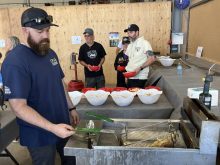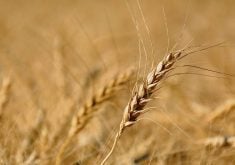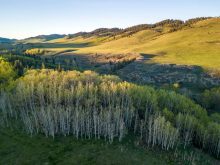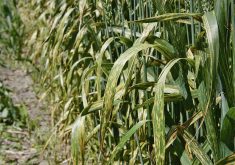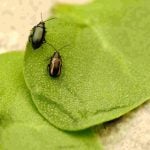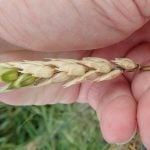Ranchers and environmentalists are both crying foul over an Alberta government plan to sell 16,000 acres of native prairie without public tender to a potato-farming company.
While the environmental community is upset over the looming loss of the native prairie, the threat to endangered species, and the water draw required for potato farming, cattlemen are alleging one farmer is getting special treatment.
However, full details of the proposed sale have yet to emerge.
The proposed buyer, SLM Spud Farms, refused comment for this story and Alberta Sustainable Resource Development (SRD) had few details to offer. Department spokesperson Dave Ealey confirmed SRD is considering an application for the sale of 25 sections of publicly owned grazing lands north of Bow Island. At least part of the land is leased by SLM Spud Farms, owned by Louis Ypma and his family, but Ealey could not confirm whether all 16,000 acres are currently leased by the company.
Read Also
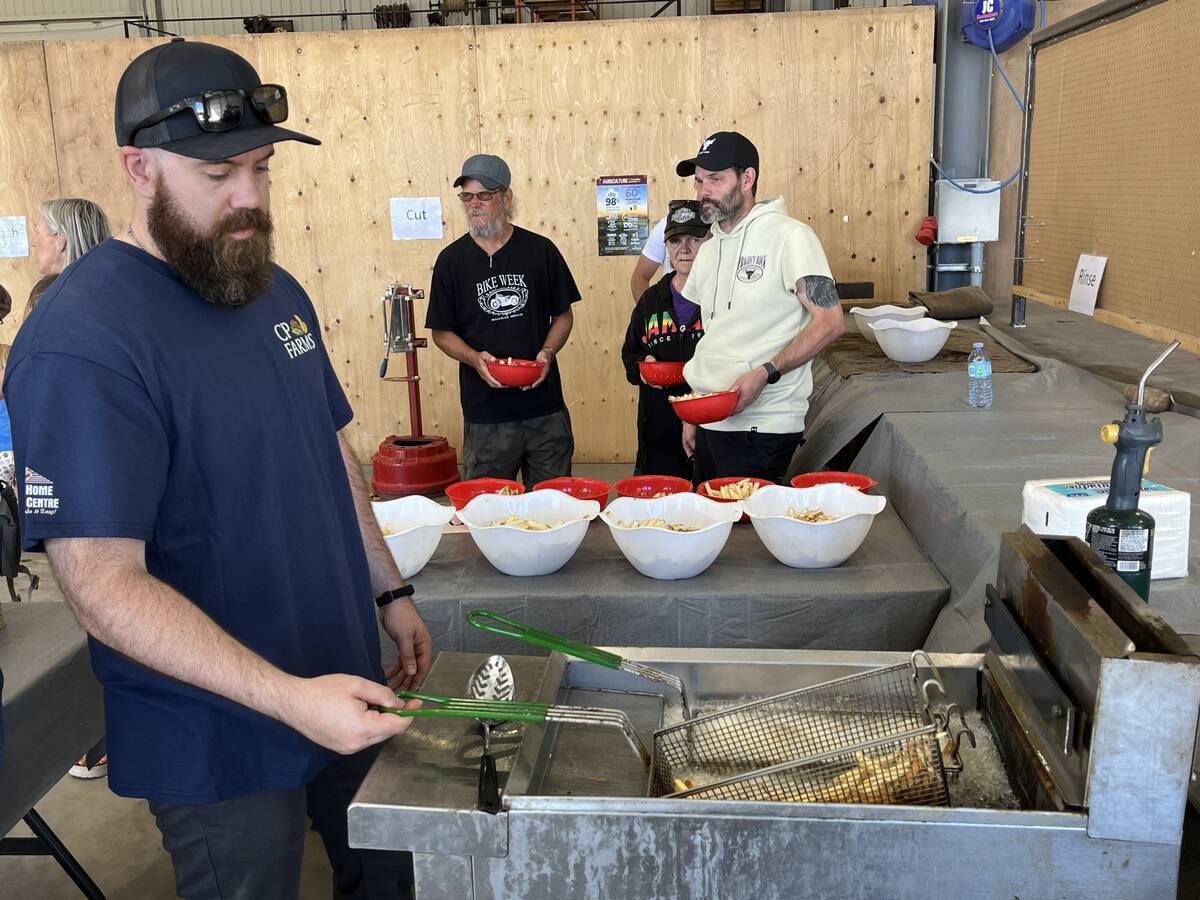
CP Farms showcases its spud production
CP Farms opens its doors to showcase potato production during Alberta’s Open Farm Days.
The fiercest opposition to the proposal is coming from the environmental movement, led by the Alberta Wilderness Association.
“The government is putting a much higher value on cultivated land than on native prairie,” said Nigel Douglas, the association’s conservation specialist.
“There’s easy money to be made by plowing up the prairie, but this land is home to a number of endangered species. How do you put a dollar figure on burrowing owls? Once this land is developed, it’s lost to a whole lot of other uses, grazing, recreation and hunting – those are things you can put a value on. Developing this land would have a huge cost to future users.”
Native prairie is particularly important to native birds, which have been in precipitous decline in recent years. Besides burrowing owls, short-eared owls, ferruginous hawks, long-billed curlew, Sprague’s pipit, McCown’s longspur and the rusty blackbird depend on native short-grass prairie. “This government undervalues native prairie,” said Douglas. “It’s seen as useless land. But it isn’t. It’s valued by the grazing association and it’s valued by the public. Our view is that this land is owned by the Alberta public and the people of Alberta should have the right to make this decision.”
Ealey disputed that characterization.
“It’s already being used for agriculture,” said Ealey. “The land will continue in that use. We can allow this sale as long as we meet our obligations to populations of legally designated species (species such as burrowing owls that are listed as endangered). We have options for not allowing cultivation of critical habitat. We may require a management plan to ensure some wildlife species are protected, or to minimize the impact of cultivation on various species.”
He said his department focuses on co-operation with landowners but does have enforcement powers to protect species at risk.
Special treatment
Meanwhile, cattlemen are upset over what they see as special treatment for SLM Spud Farms and fear they may be forced to give up grazing land for Ypma’s potato farm expansion.
Although leaseholders in northern Alberta can buy their lease land without tender or auction, that’s not the standard procedure south of Highway 16. In southern Alberta, a request to buy public land is reviewed by Sustainable Resource Development to determine if the parcel is suitable for sale and is in excess of the department’s needs. If a sale is recommended, it is sold to the highest bidder through auction or public tender.
Local ranchers are questioning why that procedure hasn’t been followed in this case.
“Why should one person be favoured over others?” said Jim Babe, president of the Bow Island Grazing Association. “Why is this deal not open to tender?”
The group fears it may be forced to give up some of its land for the potato farm expansion. Two years ago, it was asked by Sustainable Resource Development to consider a 12-section lease land swap with Ypma. Babe said his association, composed of 47 cattle producers, rejected the swap because the land being offered was poorer pasture. Since then, their lease has come up for renewal, but the group was only offered a two-year contract, instead of the usual five. As well, the group’s bid to make some improvements to the leased land has been bogged down with the department and a request to put about 50 acres of prairie under a pivot was rejected because of a moratorium on breaking native prairie.
Babe said his members, who are located from Coaldale to Irvine, don’t feel they’re being treated fairly. He said they’ve put a lot of time and energy into their improvement project, and incurred legal and consulting fees in preparing their proposal.
“We may have no say in this,” said Babe, who farms at Medicine Hat. “But if we have to give up our lease, we should be compensated.”
He also rejected the idea that a sale would be in the public good.
“There’s talk of the jobs and economic benefits a potato farm would create, perhaps even another potato plant, but I don’t believe one potato farm means a lot of jobs,” said Babe. “I think the economic spinoffs from spreading irrigation over a lot of smaller communities might be greater. Our contract has economic benefits too, putting in pivots on some areas of the lease and making cattle operations more viable for our members.”
The two other issues in this story are irrigation water and the need for more potato acreage.
Potatoes needed?
The Potato Growers of Alberta is cool to the proposed expansion, which could see 4,000 of the 16,000 acres put into potato acreage each year.
“We’d prefer to see any increase in production spread among current growers,” said Edzo Kok, the association’s executive director.
Potato contracts in southern Alberta were cut by 3,000 acres this year (to 38,000 acres) because consumption of french fries has dropped due to the recession. There is excess capacity in processing around the world, said Kok.
“Our objective is to grow the industry by growing the market first,” he said. “We don’t support growing potatoes on spec.”
The irrigation water issue also is raising concerns, although there is sufficient supply.
“We have the water available,” said Richard Phillips, general manager of the Bow River Irrigation District. “We’ve replaced leaky old canals with pipelines and farmers have switched to much more efficient low-pressure pivots, so we’ve been able to expand by 21,000 acres in the last few years.”
But that doesn’t mean the water should go to potato farms, said Douglas, the spokesperson for Alberta Wilderness Association, which wants more water to remain in the overallocated rivers of the South Saskatchewan to protect aquatic ecosystems.
“A lot of people have been contributing to the South Saskatchewan Regional Plan to determine the direction of future development,” said Douglas.
“But, instead of following the plan, the government wants to pre-empt it and replace it with secretiveness behind closed doors. The whole process stinks. It’s time there was a fair accounting, looking at both sides of the ledger… grazing may be the most efficient use of our water.”
———
“Wemayrequirea managementplanto ensuresomewildlife speciesareprotected,or tominimizetheimpact ofcultivationonvarious species.”
DAVE EALEY
ALBERTA SUSTAINABLE RESOURCE DEVELOPMENT
———
“But, instead of
following the plan, the government wants to pre-empt it and replace it with secretiveness behind closed doors. The whole process stinks.”
NIGEL DOUGLAS
ALBERTA WILDERNESS ASSOCIATION CONSERVATION SPECIALIST


